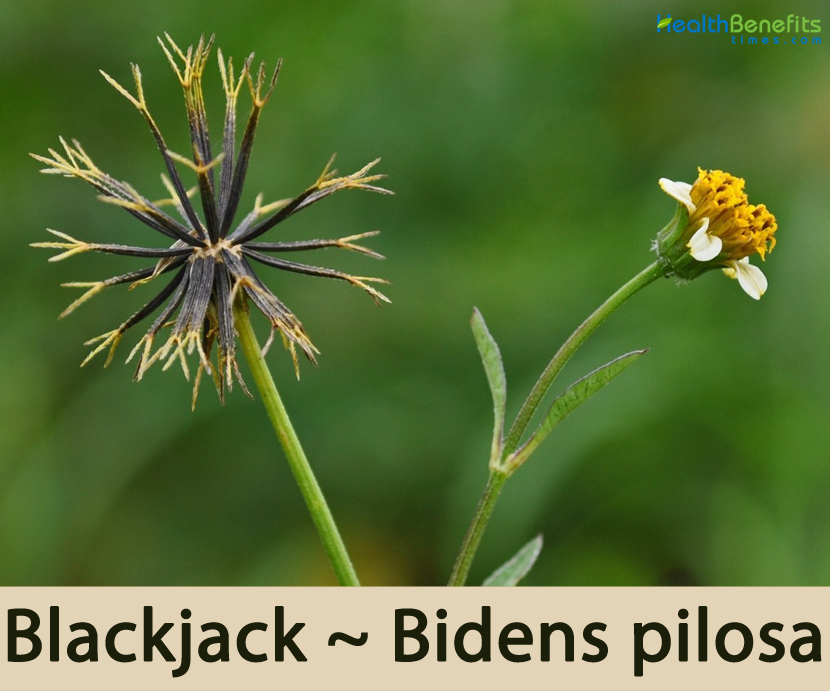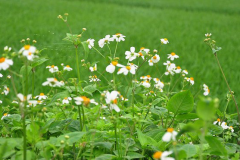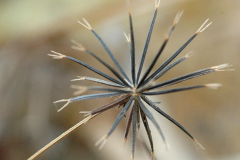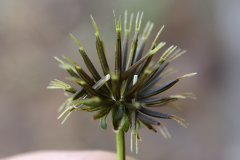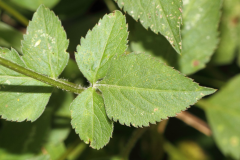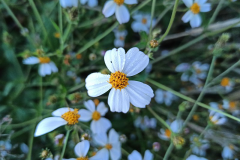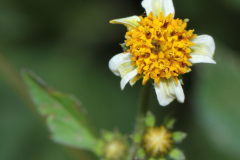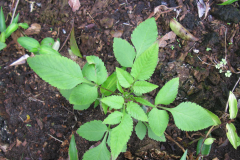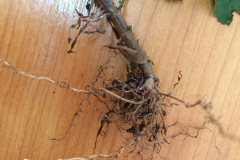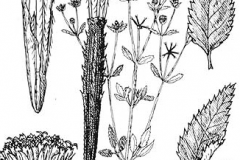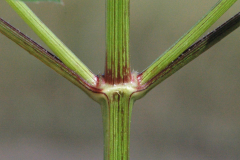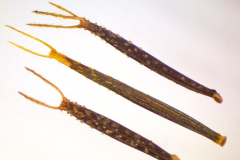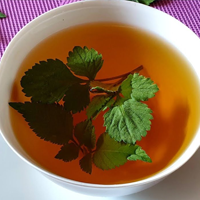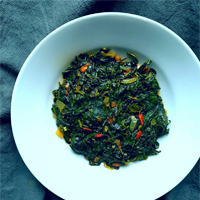| Blackjack or beggar ticks Quick Facts | |
|---|---|
| Name: | Blackjack or beggar ticks |
| Scientific Name: | Bidens pilosa |
| Origin | Tropical America (i.e. in Mexico, Belize, Costa Rica, El Salvador, Guatemala, Honduras, Nicaragua, Panama, the Caribbean, French Guiana, Guyana, Surinam, Venezuela, Brazil, Bolivia, Colombia, Ecuador, Peru, Argentina, Chile and Uruguay). |
| Colors | Black |
| Shapes | Achenes, black, long and slender, linear, 1 to 1.5 centimeters long |
| Taste | Bitter, Astringent |
| Health benefits | Diabetes, High blood pressure, Malaria, Skincare, Belly Fat Reduction and Cardiovascular health, Natural Mouth Wash, Heals wound, opportunistic infections, Prostate Function, Cancer treatment, Wound treatment, earache |
| Name | Blackjack |
|---|---|
| Scientific Name | Bidens pilosa |
| Native | Tropical America (i.e. in Mexico, Belize, Costa Rica, El Salvador, Guatemala, Honduras, Nicaragua, Panama, the Caribbean, French Guiana, Guyana, Surinam, Venezuela, Brazil, Bolivia, Colombia, Ecuador, Peru, Argentina, Chile and Uruguay) |
| Common Names | Beggar’s tick, beggar’s ticks, black jack, bur, bur marigold, butterfly needles, cobbler’s peg, common beggar-ticks, common blackjack, farmer’s friend, hairy beggar ticks, hairy beggar-ticks, needle and thread, pitch forks, pitchforks, shepherd’s needles |
| Name in Other Languages | Adi: Tanggom oying Afrikaans: Blackjack, Wewenaar Albanian: Shkop polici Amharic: Blackjack (blakˌjak), ch’egogīti (ጨጎጊት) Angola: Olokosso Arabic: Luebat waraq (لعبة ورق), husaykat wabira (حُسَيْكَة وَبِرَة) Argentina: Amor seco, espina de erizo, picón, saetilla Armenian: Mahak (մահակ) Australia: Cobbler’s pegs Azerbaijani: Blackjack Barbados: Spanish needle Basque: Blackjack, eskale akaina, orratza Bengali: Blackjack (blakˌjak) Belarusian: Dubinka (дубінка) Bontoc: Nguad, puriket Bosnian: Mješina Brazil: Amor secom, carrapicho-de-duas pontas, coambi, erva-picao, fura-capa, goambu, picao, picao preto, picao-campo, pico-pico Bulgarian: Pirat·sko zname (пиратско знаме) Burmese: Bhalaatbhaann (ဘလက်ဘန်း) Catalan: Vint, bident pilós, gossets peluts, gossos, margarida de marjal, te pelut Cebuano: Blackjack Central Khmer: Phi den (ភិដែន) Chichewa: Blackjack Chile: Asta de cabra, cacho de cabra Chinese: Èrshíyī diǎn (二十一点), Sān yè guǐ zhēn cǎo (三叶鬼针草), hsien-feng-tsau, xiang feng cao, Zhan ren cao, Xie qian cao, Dui cha cao, Dou zha cao, Jin kai zhan pan Colombia: Cadillo, masquia, papunga chipaca Comoros: Mtsohova, sindanou Cook Islands: Piripiri Corsican: Blackjack Croatian: Mješina Czech: Blackjack, Dvouzubec chlupatý Danish: Blackjack, Sydamerikansk brøndsel Dominican Republic: Margarita Silvestre, romerillo Dutch: Blackjack, ploertendoder English: Blackjack, Hairy Beggar’s ticks, Hairy beggarticks, Spanish needles, Beggar’s ticks, Beggar-ticks, Cobbler’s pegs, Common beggarticks, Fisi`uli, Farmer’s Friends, Soldier’s vegetables, Z’Herbe Zuedruite, hairy bidens, common blackjack, railway daisy shepherd’s needle Esperanto: Nigraokulo, blackjack Estonian: Blackjack, karvane ruse Fijian: Batimadramadra, matakaro, matua kamate, mbatikalawau, mbatimandramandra Filipino: Blackjack, pisau-pisau Finnish: Blackjack, Karvarusokki French: Blackjack, bident hérissé, bident poilu, herbe d’aiguille, herbe villebague, piquants noirs, Somet, bident pileux, soinette, sournette Frisian: Blackjack Galician: Blackjack Georgian: Blackjack (blakˌjak) German: Blackjack, Behaarter Zweizahn, Zweizahn Greek: Kontó rópalo deméno me lourí (κοντό ρόπαλο δεμένο με λουρί) Gujarati: Blēkajēka (બ્લેકજેક), Blackjack, Phutium Haitian Creole: Matrak Hausa: Blackjack Hawaiian: Eleʻele, kī, kī nehe, kī pipili, nehe Hebrew: Do-shen sa’ir , בלאק ג’ק Hindi: Daanda (डांडा), cobbler’s pegs, dipmal, phutium, Tharwad, Kumra, Kumur, Kurei Hmong: Nees nkaum ib Hungarian: Blackjack, farkasfog Ibatan: Dadayem Icelandic: Blackjack Igbo: Blackjack Indonesian: Selikuran, Ketul, adjeran harenga; djaringan ketul, Jaringan Irish: Blackjack Irula: Kothimullu, Paimullu Italian: Manganello, Forbicina pelosa Jamaica: Spanish needle Japanese: Burakkujakku (ブラックジャック), , ko-sendangusa (コセンダングサ) Javanese: Blackjack Kannada: Blyākjāk (ಬ್ಲ್ಯಾಕ್ಜಾಕ್) Kazakh: Blackjack Kenya: Blackjack Khmer: Blackjack Kinyarwanda: Blackjack, Inyabarasanya Korean: Gonbong (곤봉), huin do kkae bi ba neul (흰도깨비바늘), ul san do kkae bi ba neul (울산도깨비바늘) Kurdish: Blackjack Kyrgyz: Blackjack Lao: Blackjack (blakˌjak), kabong (ກະບອງ) Laos: Pak kwan cham Latin: Aenean Latvian: Nūju, sist ar nūju Lithuanian: Juodmedis, Blackjack Luxembourgish: Blackjack Macedonian: Blek džek (блек џек) Malagasy: Blackjack Malay: Blackjack Malayalam: Blākk jack (ബ്ലാക്ക് ജാക്ക്), blackjack (ബ്ലച്ക്ജച്ക്), snēhakkūṟa (സ്നേഹക്കൂറ) Malaysian: Kancing baju, pali-pali pasir, kerotan Maltese: Blackjack Mangarevan: Tarou, taru Manipuri: Hameng sampakpi (ꯍꯥꯃꯦꯡ ꯁꯝꯄꯥꯛꯄꯤ) Maori: Blackjack, kamika tuarongo, nīroa, piripiri, piripiri kerekere, piripiri nīroa Marathi: Blĕkajĕka (ब्लॅकजॅक), blackjack Mauritius: Herbe villebague Mongolian: Blek (блэк) Nepali: Kālōjyāka (कालोज्याक), Blek (ब्लेक), kaalokuro (कालोकुरो), Tikhe kuro (तिखे कुरो) Mexico: Acahual, acahual blanco, aceitilla, aceitilla blanco, aceitillo, amapola, amor seco, cadillo, China, cruceta, é de milpa, hierba amarilla, hierba del pollo, iztacmozot, kutsúmu, mozoquelite, mozote, mozote blanco, mozotl, quelite amargo blanco, rocía, rocilla, rosella, saetilla, sepé, sepeke, stuyut, té de milpa blanco, te de playa, tutuk joi’dha, zetya Mizo: Vawkpui-thal Myanmar: Moat-so-ma-hlan, ne-gya-gale, ta-se-urt New Caledonia: Piquant noirs New Zealand: Cobbler’s pegs Niue: Kofe tonga, kofetoga Northern Mariana Islands: Beggar ticks, Guam daisy Norwegian: Blackjack Odia: Blackjack Oriya: Blackjack, Samara Kodaki Panama: Arponcito, cadillo, sirvulaca Papua New Guinea: Kobkob Pashto: تورې Persian: بزور و با تهدید Peru: Amor seco, cedilla, pega-pega, perca Philippines: Dadayem, nguad, panibat, pisau-pisau, puriket, purpurikit, tagab, tubak-tubak Polish: Maczuga, Uczep owłosiony Portuguese: Blackjack, Agulha, Amor-de-burro, Carrapicho-de-agulha, Carrapicho-de-duas-pontas, Cuambú, Erva-carneira, Erva-picão, Fura-capa, Goambú, picão preto, Picão, armores-de-burro, macela-do-campo, malpica, murciécalo, pica-pica, uva-carneira, Puerto Rico: Margarita, margarita Silvestre, romerillo Pukapukan: Pilipili Punjabi: Balaikajaika (ਬਲੈਕਜੈਕ) Quechua: P’irqa Romanian: Blackjack Rundi: Amakanda Russian: Blek Dzhek (Блэк Джек), chereda volosistaya (череда волосистая) Scots Gaelic: Blackjack Samoan: Blackjack Saudi Arabia: Piquant, sornette zerb lapin Serbian: Blackjack (блацкјацк) Sesotho: Blackjack Shona: Blackjack Sindhi: بليڪ جڪ Sinhala: Blæk jæk (බ්ලැක් ජැක්), blæk jæk yānaya (බ්ලැක් ජැක් යානය) Slovak: Pirátska vlajka, dvojzub Slovenian: Blackjack Somali: Blackjack South Africa: Blackjack, gewone knapseherel Spanish: Veintiuna, Amores-de-burro, Dos dientes, Erva-carneira, Fura-capa, acetillo, amor seco, arponcito, asta de cabra, bidente piloso, cacho de cabra, cadillo, hierba amarilla, masquia, mazote, papunga chipaca, pega-pega, perca, rosilla, sirvulaca, apestosa, jacalate, manzanilla del pais, papuga, picon, romerillo blanco, rosilla grande, vara de jacalate, bidentes, brujilla, espina de erizo, saetilla, saetillas, manzanilla del país, asta de cabra, cacho de cabra, aceitilla, apestosa, cadillo rocero Sudanese: Blackjack, Hareuga Swahili: Blackjack Swedish: Blackjack, nålskära Tahitian: Piripiri Taiwan: Hsien-feng-tsau Tajik: Blackjack (blakˌjak) Tamil: Piḷāk jāk (பிளாக் ஜாக்) Tangkhul: Phanang Tatar: Blackjack Telugu: Blākjāk (బ్లాక్జాక్) Thai: Krabxng (กระบอง), puen nok sai (ปืนนกไส้), yah koen-jam khao Tongan: Fisiʻuli Trinidad and Tobago: Railway daisy, spanish needle Turkish: Blackjack Turkmen: Blackjack Ukrainian: Blekdzhek (блекджек), kyyok (кийок) Urdu: بلیک جیک Uruguay: Amor seco USA: Beggar ticks, hairy beggarticks, spanish needles Uyghur: Blackjack Uzbek: Blackjack Venezuela: Cadillo rocero Vietnamese: Blackjack, cái vồ, Xuyến chi, cuc trang, su nha long Wallisian: Tae puaka Welsh: Blackjack, graban blewog Xhosa: Umnyama Yiddish: Blakjak (בלאַקדזשאַק) Yoruba: Blackjack Zambia: Blackjack Zimbabwe: Nyamaradza Zulu: Umnyama, blackjack |
| Plant Growth Habit | Erect, slender, branching, herbaceous, upright branched shrub with annual or annual-like behavior |
| Growing Climates | Gardens, parks, pastures, roadsides, disturbed sites and waste areas near villages, waterways, riverbanks, wetlands, forest margins, open woodlands, coastal forests, grasslands, valleys, and secondary forests, damp lowland fields, plantations |
| Soil | Fertile soil in the wild, planting fields and gardens. It prefers light, medium and heavy soils, but thrives in loose soil high in organic matter. It also thrives in deep, well-drained soil. It can grow in a soil pH range from 4 to 9 and can tolerate saline soil |
| Plant Size | 0.2 to 1.5 meters high |
| Stem | Square in cross section (quadrangular), mostly hairless and green to purplish in color |
| Leaf | Leaves are 1- to 2-pinnatifid and 15 centimeters long or less, the upper ones being usually much smaller; segments ovate-lanceolate, 2 to 5 centimeters long and toothed |
| Flowering season | October-April |
| Flower | Flowering heads are about 8 millimeters long. Disc flowers are brown or yellowish and the ray ones yellow or nearly white. Inner involucral bracts have broad, scarious margins. Flowering head about 8 millimeters long |
| Fruit Shape & Size | Achenes, black, long and slender, linear, 1 to 1.5 centimeters long and characterized by four projections at the apex |
| Fruit Color | Black |
| Taste | Bitter, Astringent |
| Plant Parts Used | Whole Plant |
| Propagation | By seed |
| Season | December onwards |
| Health Benefits |
|
Plant Description
Blackjack or beggar ticks is an erect, slender, branching, herbaceous, upright branched shrub with annual or annual-like behavior that normally grows about 0.2 to 1.5 meters high. The plant is found growing in gardens, parks, pastures, roadsides, disturbed sites and waste areas near villages, waterways, riverbanks, wetlands, forest margins, open woodlands, coastal forests, grasslands, valleys, and secondary forests, damp lowland fields and plantations area. The plant grows in fertile soil in the wild, planting fields and gardens. It prefers light, medium and heavy soils, but thrives in loose soil high in organic matter. It also thrives in deep, well-drained soil. It can grow in a soil pH range from 4 to 9 and can tolerate saline soil.
Stem
Stems are erect, ramified, square and hairless, up to 120 cm tall. It has spreading branches, when the season progresses. The major branches tend to sprawl and root at the lower nodes where they touch the ground.
Leaves
The leaves are oppositely arranged with leaf stalks (petioles) 1-6.5 cm long. Their margins have forward pointing teeth (serrated). Leaf blades vary in shape. At the base of the plant, leaves tend to be simple and more or less oval in shape, higher up the plant leaves are mostly compound (pinnate) with 3-7 egg-shaped with broad end at base (ovate) leaflets, and the uppermost leaves are smaller and simple or with 3 leaflets (trifoliolate). Leaf or leaflet size varies from 1.5-7 cm long and 0.5-3.5 cm wide.
Flowers
The flowers are small, white and yellow in color and are 5 to 15 mm in diameter. They are borne on long, slender stalks at the end of the stems. Each flower head has 4 or 5 short, broad, white petals with numerous, yellow disc florets. It flowers from October, but occurs throughout the year but primarily in summer to autumn. The flowers have both male and female organs and are pollinated by bees.
Fruit
The fruit is a black achene, fusiform, with a triangular section, and slightly striated, with white hairs. It is 5 to 13 mm long and 1.5 mm wide. Pappus is formed of 2 or 3 points, with small retrorse spines. At maturity, the whole forms a half sphere with bristling spines.
The barbed spines of the achene get stuck in the feathers, fur, fleeces, clothing, etc. of people or animals that brush against the plant. It is an effective means of seed dispersal by zoochory, as the fruits are transported by animals. This mechanism has helped the plant become a noxious weed in temperate and tropical regions. The barbed awns can injure flesh.
Health benefits of Blackjack or beggar ticks
Listed below are some of the popular health benefits of Blackjack or beggar ticks
1. Diabetes
A blackjack or beggar tick has been traditionally used as an herb for diabetes. Early studies have found that the compounds in the plant may have an anti-diabetic effect on animals. Research is still in its early stages, and it’s not clear if these findings apply to people.
2. High blood pressure
Early research has shown that the compounds in Blackjack or beggar ticks may be potentially useful in the prevention of high blood pressure (hypertension). But like many of the benefits of the blackjack plant, more research is needed to find out how this affects people.
3. Malaria
Scientists say that some of the naturally occurring compounds in the blackjack plant have the potential to be useful against malaria. Malaria is a disease caused by a parasite that infects mosquitos. The use of drugs has resulted in drug resistance in these malaria-causing parasites.
4. Antibacterial activity
Blackjack plant extract and its compounds may have antibacterial uses. One study found that essential oils of blackjack flowers and leaves had moderate levels of antibacterial activities. Another study found that a compound in the blackjack plant was highly effective against several bacteria, such as the drug-resistant bacteria.
5. Skincare
Blackjack or beggar ticks extract may have benefits for your skin. An earlier lab-based research found that some of the components of Blackjack or beggar ticks, such as phytanic acid, may have effects on your skin that are similar to retinoids. Topical retinoid that are currently used to treat skin problems may cause side effects such as dryness, burning, and photosensitivity.
6. Belly Fat Reduction and Cardiovascular health
The fiber plentifully present in black jack tremendously boosts heart health. Fiber is known to lower bad cholesterol while also increasing good cholesterol and this kind of cholesterol balance prevents plaque buildup in blood vessels thus considerably cutting the risk of heart attack and stroke as well as promoting heart health in general.
Similarly, fiber present in black jack reduces belly fat, the most dangerous form of fat to carry. Belly fat, also referred to as visceral fat, surrounds vital organs like the heart and liver. This situation dramatically increases the risk of heart disease, heart attack, stroke, diabetes, cancer, and other chronic diseases. By keeping belly fat away, black jack tremendously promotes general cardiovascular health.
The antioxidants in black jack also help keep the cardiovascular system in good health. Research continue to show a strong relationship between diets rich in antioxidants and very low rates of cardiovascular diseases such as heart disease, high blood pressure, cholesterol abnormalities, and stroke.
7. Natural Mouth Wash
Due to the plant’s antiseptic properties, plant extract may also be used as a natural mouthwash to combat odor causing germs along with sore gums and mouth. It can therefore be used as a gargle for mouth blisters.
8. Antifungal use
Blackjack or beggar ticks have been used in traditional medicine to treat bacterial infections. Scientists say that the essential oils of the plant have more anti-fungal activity than the extracts.
9. Healing wounds
In countries such as Venezuela, Brazil, and Cameroon, the blackjack plant has been traditionally used to treat wounds. Early research found that applying blackjack plant extract may help close wounds faster.
10. Treatment of opportunistic infections
Blackjack or beggar ticks can be used for treatment of opportunistic infections arising as a result of HIV/AIDS infections. It is a natural antibiotic that successfully treats antibiotic resistant bacteria. This is due to the fact that it is made up of hundreds of complex compounds that bacteria can’t develop resistance to.
11. Prostate Function
Blackjack or beggar ticks may be the best herb for prostrate hypertrophy, usually decreasing the membrane irritability both in the urinary tract and the rectum, and after consistent use, it brings about notable shrinking of the prostate and gives its connective tissue better tone. It increases the efficiency of the kidneys to excrete uric acid from the blood; decreasing the likelihood of a gout attack.
12. Cancer treatment
Black jack has powerful anti-cancer features too. Again, fiber takes on a leading role in countering cancer by preventing insulin resistance, a condition found to increase the risk of cancer especially hormone-related cancer like breast and prostate cancer. Insulin resistance happens when the ability of insulin to control blood sugar is impaired.
The high content of antioxidants in black jack is another reason this vegetable is a powerful anti-cancer weapon. Antioxidants protect cells against damage from harmful cancer causing radicals. By controlling damage to cells, antioxidants are able to also minimize systemic inflammation and this refers to heating, redness, and swelling in different body locations in response to cell damage. Continuous inflammation is a huge concern because is tremendously adds to cancer risk.
13. Treatment of earache
Leaf decoction is used for treating earache; sap from the plant is put in the ear to treat ear infection.
14. De-wormer
Plant is also used to make herbal tea which is taken as a general beverage or as a treatment for worms and flatulence.
Traditional uses and benefits of Blackjack or beggar ticks
- Roots, leaves and seed have been reported to possess antibacterial, anti-dysenteric, anti-inflammatory, antimicrobial, antimalarial, diuretic, hepato-protective and hypotensive activities.
- Juice made from the leaves is used to dress wounds and ulcers.
- Whole plant is anti-rheumatic; it is also used in enemas to treat intestinal ailments.
- Sap from crushed leaves is used to speed up clotting of blood in fresh wounds.
- Leaf decoction is used for treating headache.
- Sap from the plant is put in the ear to treat ear infection.
- Decoction of leaf powder is used to treat kidney problems.
- Herbal tea made from the plant decreases flatulence.
- The Zulu in South Africa use a suspension of powdered leaves as an enema for abdominal trouble.
- Substances isolated from the leaves are used in the treatment of thrush and candida.
- It is used to treat rheumatism, sore eyes, abdominal troubles, ulcers, swollen glands, heartaches, kidney problems, toothache, malaria and dysentery.
- In Africa, it is used to treat ear infections, hangovers, diarrhea, kidney problems, jaundice, burns and arthritis.
- In Mexico, it is used to treat stomach disorders, hemorrhoids and diabetes and it also possess antimicrobial properties.
- It is extensively used to treat bacterial Infections.
- It protects your muscles, joints, and tissues from inflammation and pain to prevent rheumatism.
- It is used against conjunctivitis.
- It enhances the abdominal function and keeps abdominal diseases at bay.
- It is also beneficial for stomach problems.
- It forces the blood stream to provide glucose every cell of the body.
- Leaves and flowers of this herb are used as a tonic.
- It removes blood Impurity by purifying it completely.
- It protects your throat to avoid the risk of getting throat disorder.
- It is fruitful in reducing abscess.
- An infusion prepared from boiled leaves can heal cuts.
- It curbs the inflammation of the Larynx to avoid the risk of getting Laryngitis.
- It is useful for reducing Itching.
- It is powerful in curing heart diseases.
- It also hinders the growth of cancer cells to prevent Cancer.
- It provides relief from difficult menses.
- It regulates the presence of watery fluids in the cells, tissues, and the serous cavities to prevent edema.
- It is used for treatment of swelling pain at the throat, fever among infants, and fear of cold weather.
- For sore eyes, pounded leaves are applied over the eyelids.
- It is also used for poisonous insects and snake bite.
- Leaves are used for treatment of thrush and candida.
- In Uganda, the sap from crushed leaves is used to speed up blood clotting in fresh wounds.
- Leaf decoction is used for headaches.
- Plant sap is used for ear infections.
- Decoction of leaf powder is used for kidney ailments.
- In Indo-China, dried flower buds and ground and mixed with alcohol, and used as mouthwash in toothache.
- In Java, heated leaves are applied to boils to facilitate ripening.
- It is used for stomach and mouth ulcers, diarrhea and hangovers in Zimbabwe.
- In the Congo, plant is used as poison antidote and to facilitate child delivery.
- In Nigeria, the powder or seed ash is used as a local anesthetic for cuts.
- In Tobago and Trinidad, aqueous solution of leaves used to bathe babies and children.
- In Cameroon and Central America, leaf decoction used for dizziness, migraines, headaches, rheumatism.
- In South Africa, strong decoctions of the leaf taken in large doses have been reported to be helpful in treating arthritis.
- Powder or ash from the seed is used as a local anesthetic and rubbed into cuts in Nigeria.
- The Giriama tribe from the coastal areas of Kenya use a leaf extract to treat swollen spleens in children.
- It is used to treat a range of digestive problems, including stomach aches, bloat, constipation, diarrhea, and intestinal worms; as well as coughs, angina, headache, fever, diabetes, muscular pains etc.
- Eating the leaves as a vegetable in the daily diet has been observed to prevent goiter in the Philippines.
- They are chewed to relieve toothache.
- Crushed flower-heads are used externally to extract pus from boils.
- In Australia and Hawaii, the young shoot tips are used to make a tea and the juice-prepared from the leaves is used to treat wounds and ulcers in many countries.
- In Gabon sap from the stem is used for filaria in the eye.
- In Ivory Coast the plant is considered to be a nematicide and to relieve muscular pain.
- Leaves are rolled up into a rectal suppository for piles.
Ayurvedic Health benefits of Blackjack or beggar ticks
- Inflammation: Prepare a decoction of the leaves of Blackjack. Take two times a day.
- Wounds: Extract the juice from the leaves. Apply externally on the affected area.
- Blood Impurity: Brew some Blackjack flowers and leaves in 200 ml of water for 5 to 10 minutes. Drink it once a day to remove impurities from the blood.
- Throat Disorder: Boil few Blackjack leaves and flowers in 100 ml of water for 10 minutes. Strain it off. Drink this infusion two times a day.
- Abscess: Steep little Blackjack leaves in 150 ml boiling water for 5 minutes. Strain off this infusion. Drink this infusion to reduce Abscess.
- Cuts: Infuse few Blackjack leaves in 150 ml of boiling water. Rinse off your Cuts with this infusion to heal them.
- Hepatitis: Boil few Blackjack roots in 200 ml of water for 5 to 10 minutes. Regularly drink this decoction to get best results.
Culinary Uses
- Leaves are added raw to salads or steamed in soups and stews.
- Added to salads or steamed and added to soups and stews, they can also be dried for later use.
- Young shoot tips are used to make a tea.
- The Igorots of Bontoc (Philippines) mix B. pilosa with grains of rice to make rice wine.
- It is also used as an indigenous leafy vegetable in southern Africa.
- In sub-Saharan Africa, its fresh or dried shoots and young leaves are eaten as a leaf vegetable, especially in times of food scarcity.
- It is also an ingredient of sauces eaten with many staple foods there.
- In Uganda, leaves are boiled in sour milk.
- In Mexico, leaves are used as a substitute for tea.
- Leaves have a resinous flavor, and are eaten raw, in stews, or dried for storage.
- Flowers served with rice dishes.
Recipe for Sautéed blackjack
Ingredients
Directions
- Wash leaves thoroughly and trim off any unwanted parts.
- Peel, wash and dice carrots and onions.
- Heat oil in a saucepan and fry onions until soft.
- Add salt and the blackjack, stirring continuously.
- Add carrots and continue to stir the mixture on the heat until all ingredients are soft and cooked through.
- This dish can be served with stiff porridge, rice or yams.
Recipe for Blackjack Tea
Ingredients
- 1 handful of mature blackjack leaves
- 5 cups water
- sugar (optional)
Direction
- Wash leaves thoroughly, trim and discard any damaged parts.
- Chop leaves into small pieces.
- Boil water in a saucepan, add the prepared leaves, and simmer until a brown color is obtained.
- Strain the tea and pour into a thermos flask or teapot.
Black jack leaves recipe (mutsine)
Ingredients
- a bunch of blackjack leaves
- salt and pepper to taste
- 2 garlic cloves (chopped)
- 1 white onion (chopped)
- 2 tomatoes (chopped)
- 3 tbs. cooking oil
- 1 tsp turmeric
Direction
- Wash and chop the vegetables. Boil water and add it to the black jack leaves. Soak for 3 minutes and remove the veggies from the water and set aside.
- In a pot or pan, add the cooking oil when it heats add the chopped onions and garlic and let them release their flavors then add tomatoes and all spices.
- Cook for 5 minutes then add the black jack leaves. Cook for an additional 15 minutes.
- Enjoy with sadza (pap).
Other Facts
- It is regarded as a major weed of sugarcane, maize, coffee, tea, cotton, potatoes, vegetables, bananas, beans, tobacco, soybean and citrus in many countries across tropical American, Asia and Africa.
- It is also a serious weed in upland rice plantations in Thailand, Indonesia, Laos, Myanmar, Philippines and Vietnam.
- Igorots mix the flowers with balls of boiled rice, and then fermented to make crude spirits.
- It is useful as fodder for pigs.
- Seeds used as chicken feed.
- It is source of nectar of honeybees.
- In Kenya, it is used for the extraction of natural dyes.
- In the Congo, roots are washed, dried and used as painting brush.
- Each plant bears at least 80 flower heads with a potential production of 3000 plants in a single generation and 4 generations per year.
- The leaves fresh or after parboiling, dried in the sun and stored as powder for the dry season.
- In Nanyuki, Kenya, it is collected for the extraction of natural dyes.
- Livestock browses on the plants and in South Africa it has been used as a fodder for pigs.
- In Uganda and in Mexico, the leaves are used as an invigorating or stimulant substitute for tea.
- In the Philippines the flowers are used in the preparation of a kind of wine.
- Flowers are a good source of nectar for honeybees.
- The weight of 1000 seeds (fruits) is about 1.4 g.
Prevention and Control
Due to the variable regulations around (de)registration of pesticides, your national list of registered pesticides or relevant authority should be consulted to determine which products are legally allowed for use in your country when considering chemical control. Pesticides should always be used in a lawful manner, consistent with the product’s label.
Cultural Control
Bidens pilosa can be controlled by persistent mowing, hoeing and hand pulling in order to prevent seed production.
Biological Control
The natural enemies of B. pilosa have not been investigated in detail as potential biological control agents. Waterhouse considers the agromyzid flies as the most promising. The fungal pathogens in the list of natural enemies are all likely to be host specific and so they are also potential biological control agents.
Chemical Control
Chemical control of B. pilosa includes the use of herbicides such as glyphosate-trimesium, oxyfluorfen, atrazine, 2, 4-D glyphosate, pendimethalin, metribuzin, diuron, paraquat, nicosulfuron, and simazine.
Precautions
- The roots, leaves and flowers are strongly phototoxic, the achene weakly so.
- Substances isolated from the leaves can kill human skin in the presence of sunlight at concentrations as low as 10 ppm.
- Avoid use during pregnancy and breast feeding.
References:
https://www.itis.gov/servlet/SingleRpt/SingleRpt?search_topic=TSN&search_value=35731#null
http://www.hear.org/pier/species/bidens_pilosa.htm
https://npgsweb.ars-grin.gov/gringlobal/taxon/taxonomydetail?id=7169
https://pfaf.org/USER/Plant.aspx?LatinName=Bidens+pilosa
https://www.cabi.org/isc/datasheet/9148
http://www.theplantlist.org/tpl1.1/record/gcc-77369
https://keyserver.lucidcentral.org/weeds/data/media/Html/bidens_pilosa.htm
http://www.stuartxchange.com/Dadayem.html
https://en.wikipedia.org/wiki/Bidens_pilosa
https://indiabiodiversity.org/species/show/32981
https://uses.plantnet-project.org/en/Bidens_pilosa_(PROTA)
http://www.flowersofindia.net/catalog/slides/Beggar%20Tick.html
https://gd.eppo.int/taxon/BIDPI
https://www.nda.agric.za/docs/Brochures/BlackjackPG.pdf
https://plants.usda.gov/home/plantProfile?symbol=BIPI


